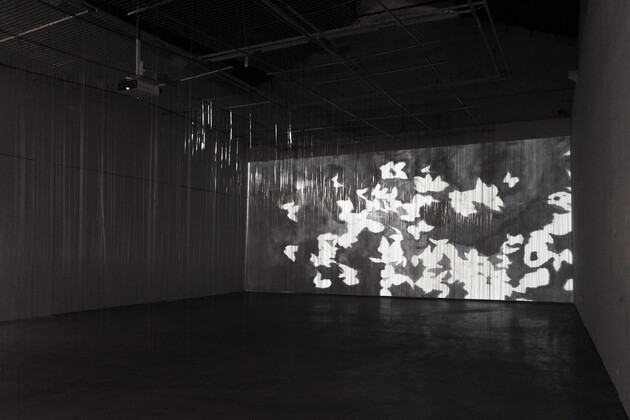LIU YI 刘毅
b. 1990, works and lives in Hangzhou

Current And Upcoming Exhibitions:
TA: Higher Heights,
Dunhuang Contemporary Art Museum, Shanghai,
07.18, 2025
- 03.20, 2026
Introduction
Liu Yi was born in 1990 in Ningbo, Zhejiang Province, and currently lives in Hangzhou. She graduated from the China Academy of Art with a master's degree. Her practice primarily focuses on ink animation, integrated with diverse mediums such as installations, music, and stage performances, to explore the perceptual boundaries of ink art within a contemporary context. Liu's works reveal the subtle and hidden interactions between individuals and their surrounding environments and investigate the complex multi-layered emotions that lie beneath daily experiences. Her work always creates a poetic resonance that traverses time and geography, reality and dreams.Liu Yi's video works and installations have been exhibited in renowned museums and institutions worldwide, including the Animist Tallinn Festival Exhibition, Cyprus Museum, Seoul Museum of Art, Power Station of Art, Ichihara Lakeside Museum Japan, Courtesy of Messe Basel, Tai Kwun HK, Guan Shanyue Art Museum Shenzhen, Tallinn Republic of Estonia,Cyprus Museum Nicosia, New Chitose Airport Japan, Centre for Heritage Arts & Textile HK, Zhejiang Art Museum and Shanghai Oil Painting and Sculpture Institute Art Museum etc.
In 2024, Liu Yi's work "When I Fall Asleep, the Dream Comes" won the Best Animation Work Award at the 26th Shanghai International Film Festival Explore Section.The work “The Earthly Men” won the gold award at the UOB Art in Ink Awards. In 2017, her work "A Crow Has Been Calling for a Whole Day" was selected for the Holland Animation Film Festival (HAFF) and later received the "Special Recommendation" award at the Hua International Short Film Festival. In 2018, Liu Yi was invited to participate in the SeMa Nanji Residency Project at the Seoul Museum of Art. The following year, she was invited to The Royal Abbey of Fontevraud in Anjou as an artist in residence and served as a jury member for the Cyprus Animation Film Festival. She also completed an exhibition during her residency program in Cyprus.
Her works have been collected by esteemed institutions such as the ASE Foundation, the White Rabbit Contemporary Chinese Art Collection, the East Asia Library of Stanford University, M+ Collection and the Power Station of Art.

